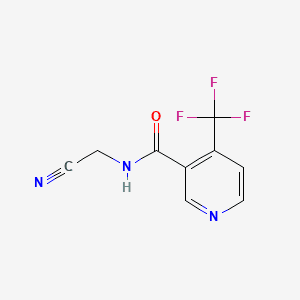

Flonicamid is a systemic insecticide that functions by blocking stylet penetration and feeding in piercing-sucking pests. Unlike neurotoxic insecticides, it disrupts the feeding mechanism of insects, resulting in rapid feeding cessation and starvation. It is effective on aphids, whiteflies, leafhoppers, and other sucking pests across a wide range of crops. Its unique mode of action complements IPM and resistance management strategies, and it shows low toxicity to beneficial insects and pollinators.

Flonicamid is a systemic insecticide that functions by blocking stylet penetration and feeding in piercing-sucking pests. Unlike neurotoxic insecticides, it disrupts the feeding mechanism of insects, resulting in rapid feeding cessation and starvation. It is effective on aphids, whiteflies, leafhoppers, and other sucking pests across a wide range of crops. Its unique mode of action complements IPM and resistance management strategies, and it shows low toxicity to beneficial insects and pollinators.

.3d8f8f41.svg)
Agrochemicals
.3556d45a.svg)

Crop Protection & Pest Control


Insecticides

Chemical Properties & Specifications
Acute Toxicity (Oral): Category 4 Aquatic Toxicity: Category 2 (chronic)
H302: Harmful if swallowed H411: Toxic to aquatic life with long-lasting effects
P270: Do not eat, drink or smoke when using this product P273: Avoid release to the environment P280: Wear protective gloves and eye protection
Aphids, thrips, jassids, whiteflies, leafhoppers, planthoppers
Cotton, paddy, chili, tomato, cucumber, potato, melon, cereals
Used in SC and WG formulations; typical dosage 100–150 g a.i./ha. Compatible with most fungicides and insecticides in tank mix
Store in cool, dry, well-ventilated area. Avoid exposure to direct sunlight and open flame. Keep away from food, feed, and water supplies
25 kg fiber drums, 50 kg HDPE drums (UN-marked)
2 drums high, palletized
Class 9 (Environmental Hazard), IMDG compliant

Category : Crop Protection & Pest Control
Sub-Category : Fungicides